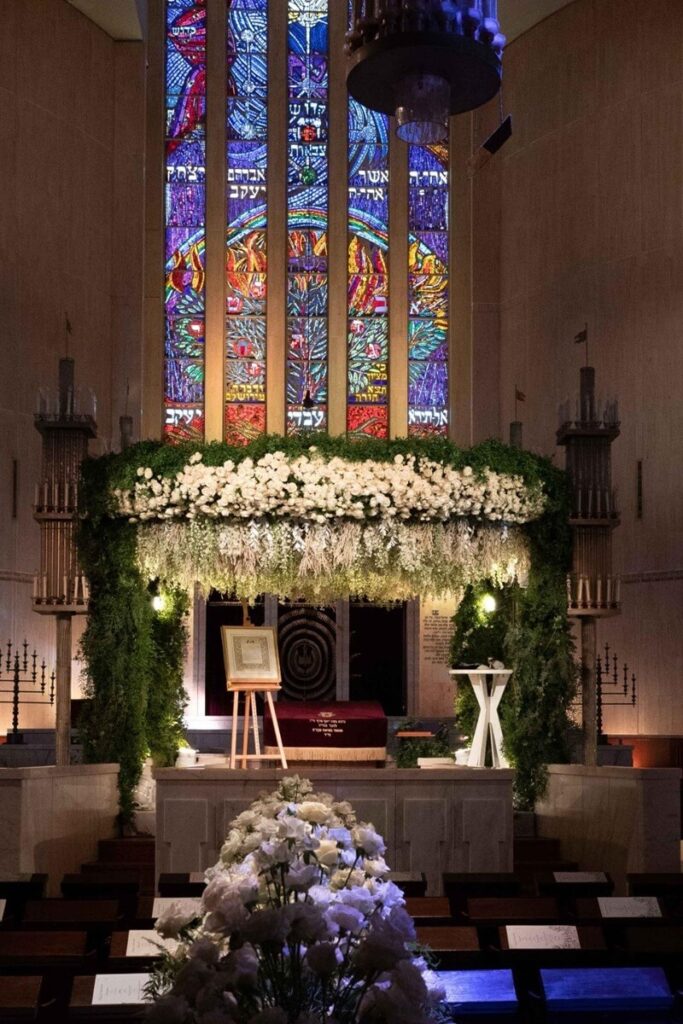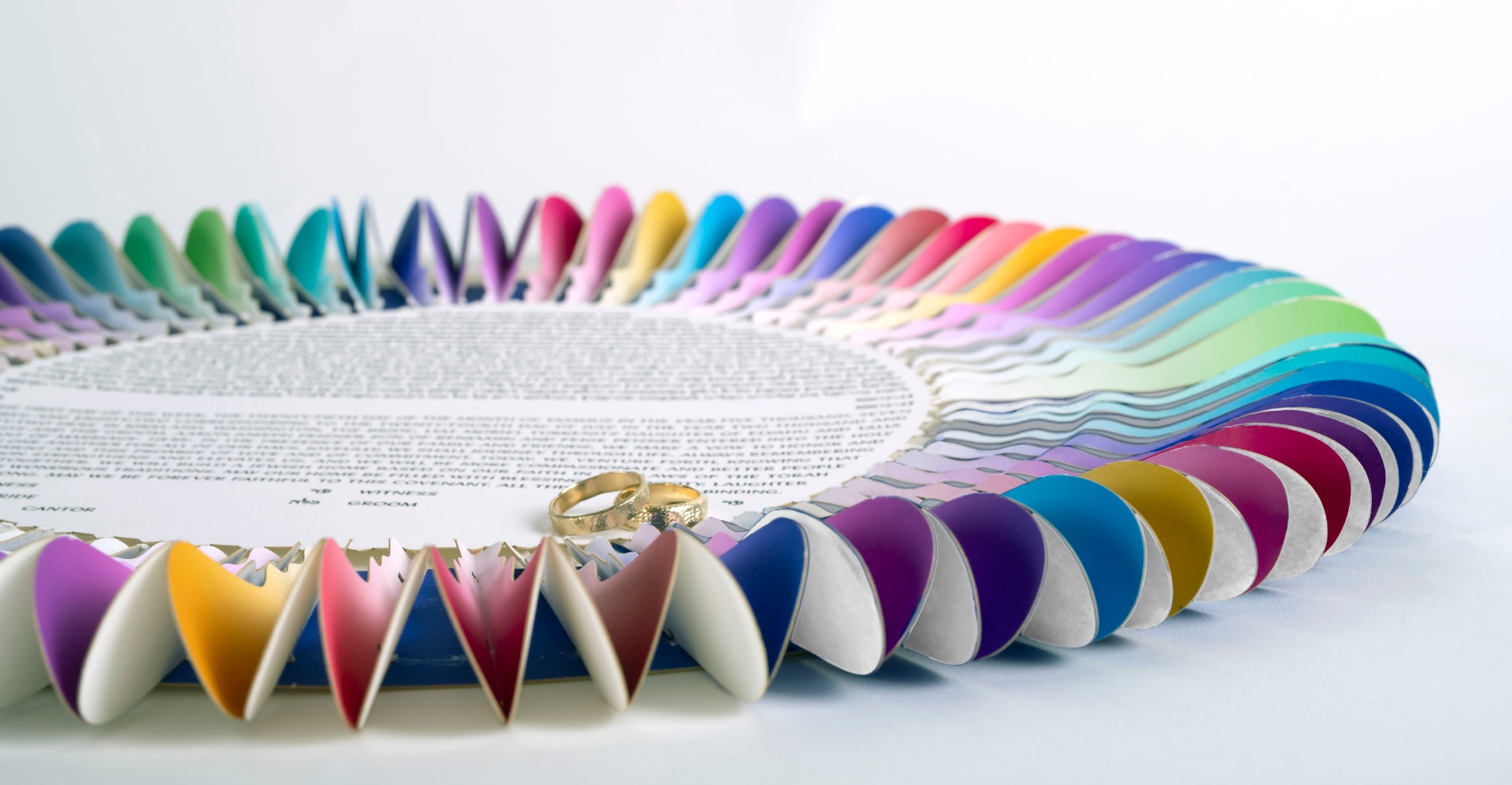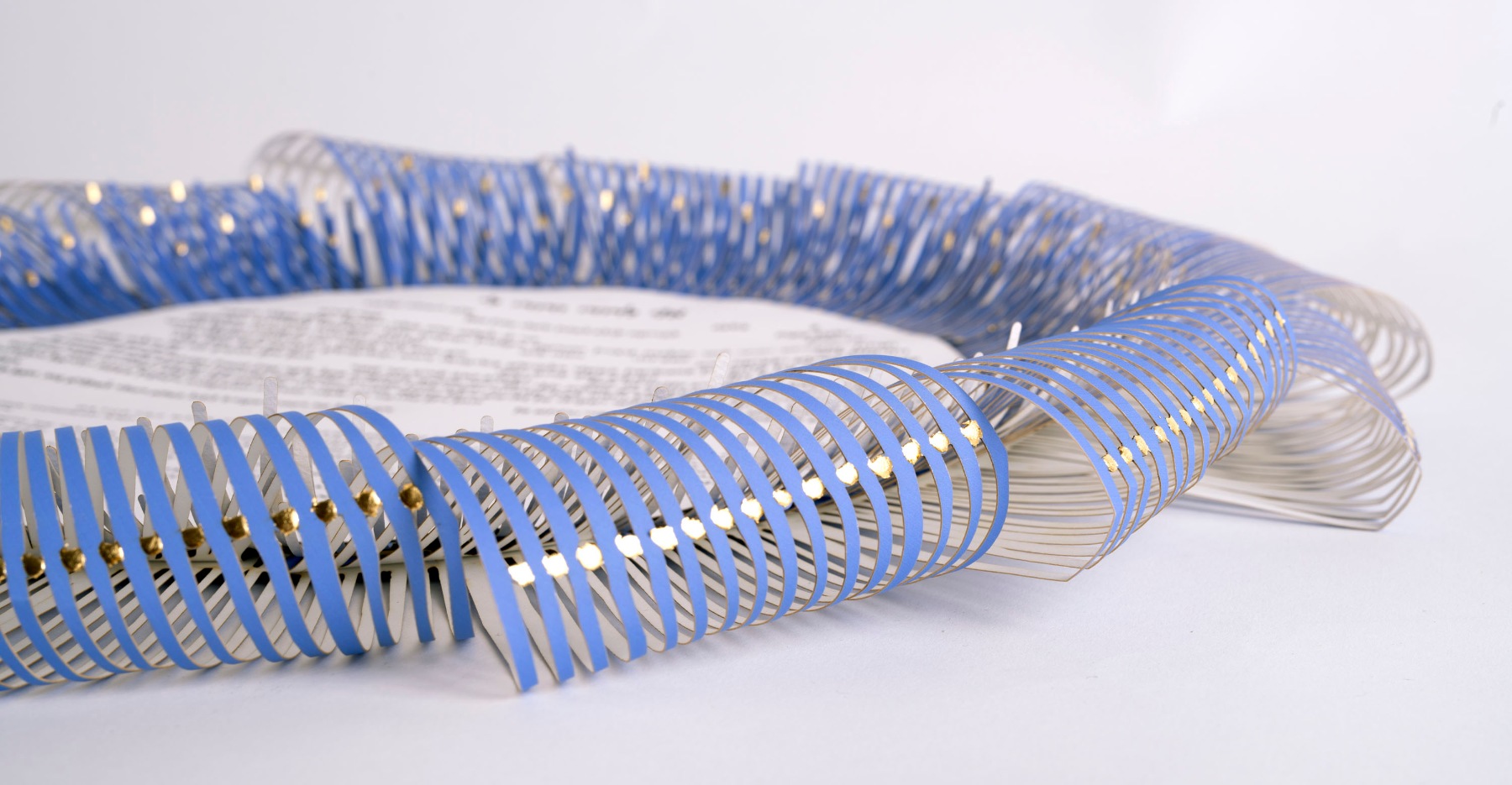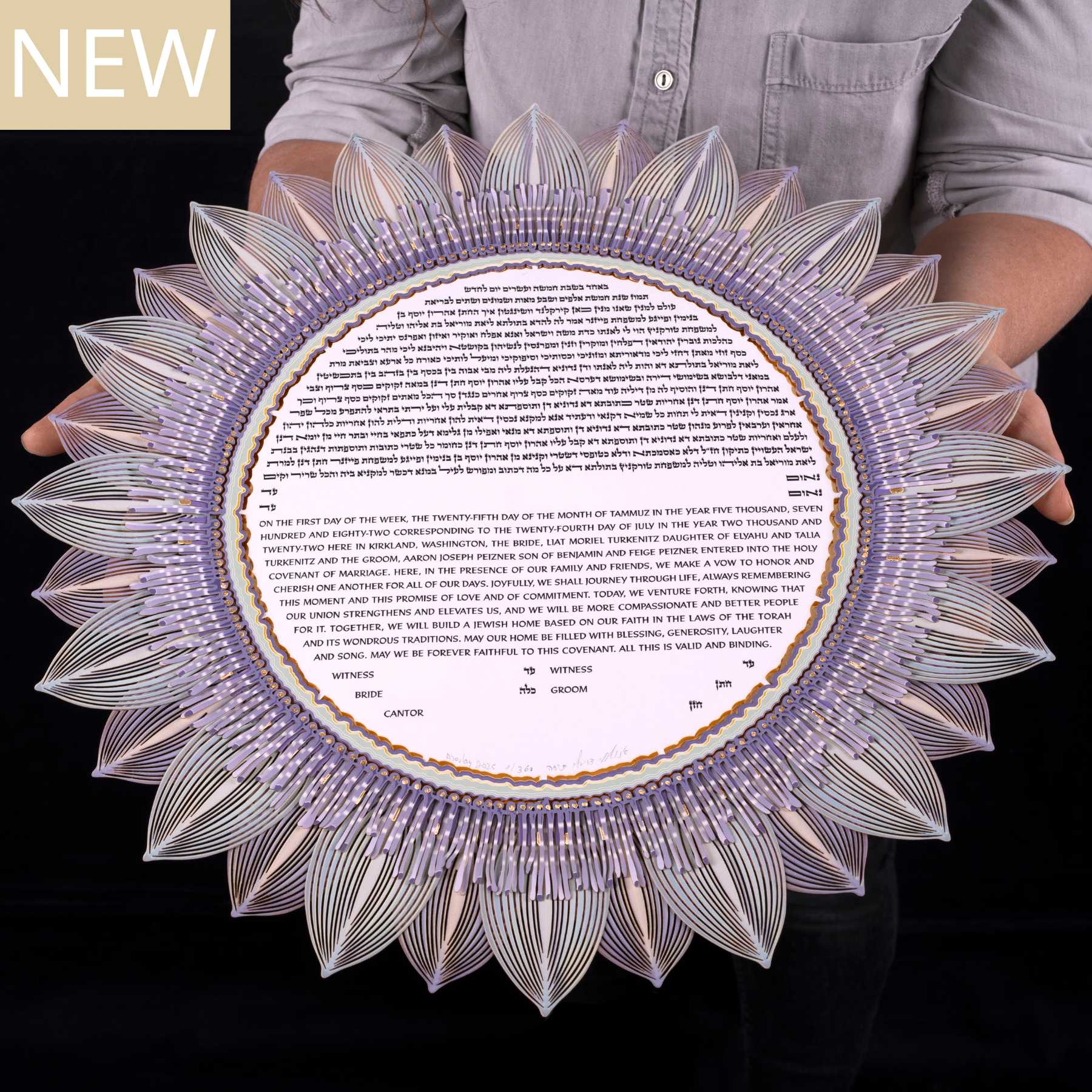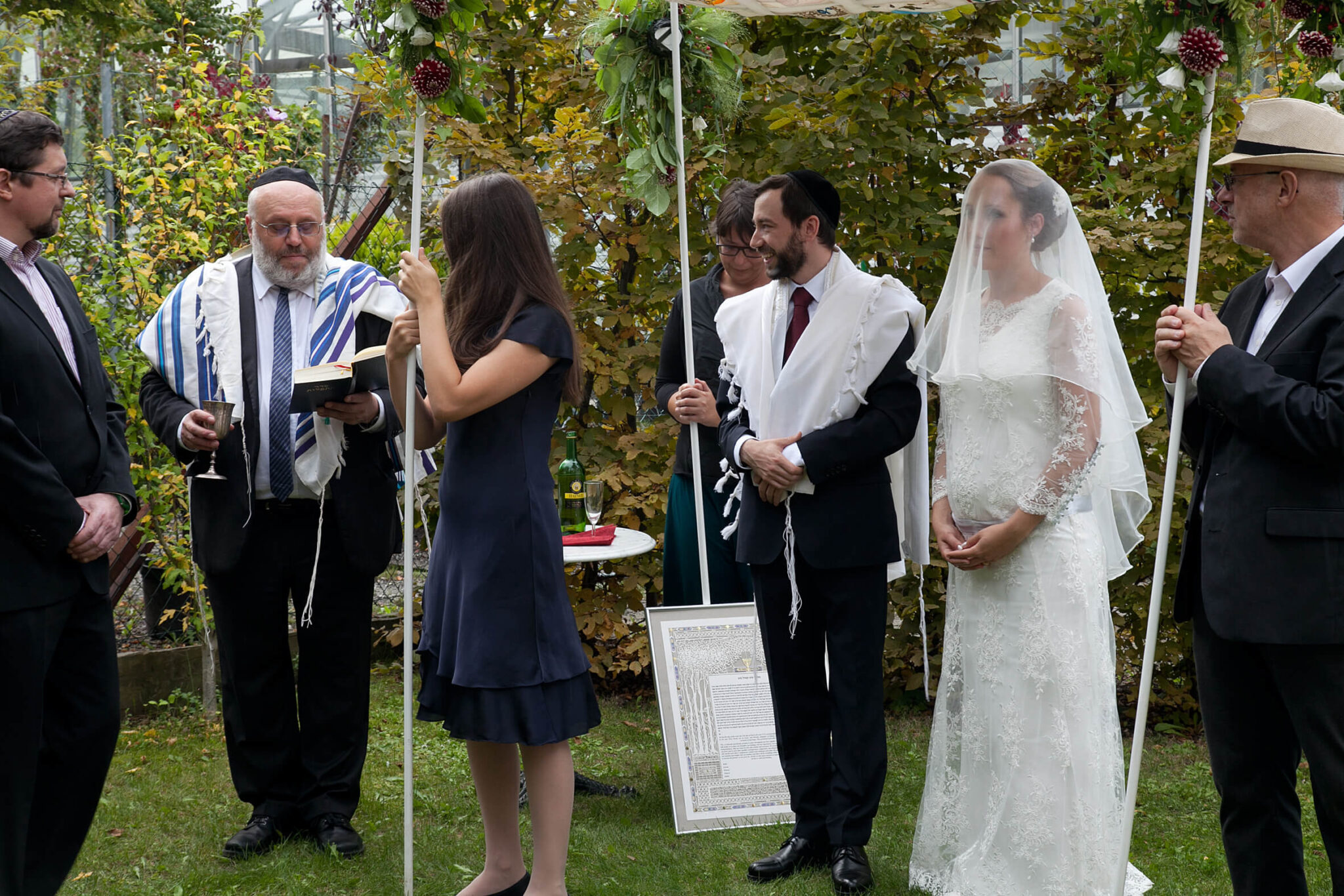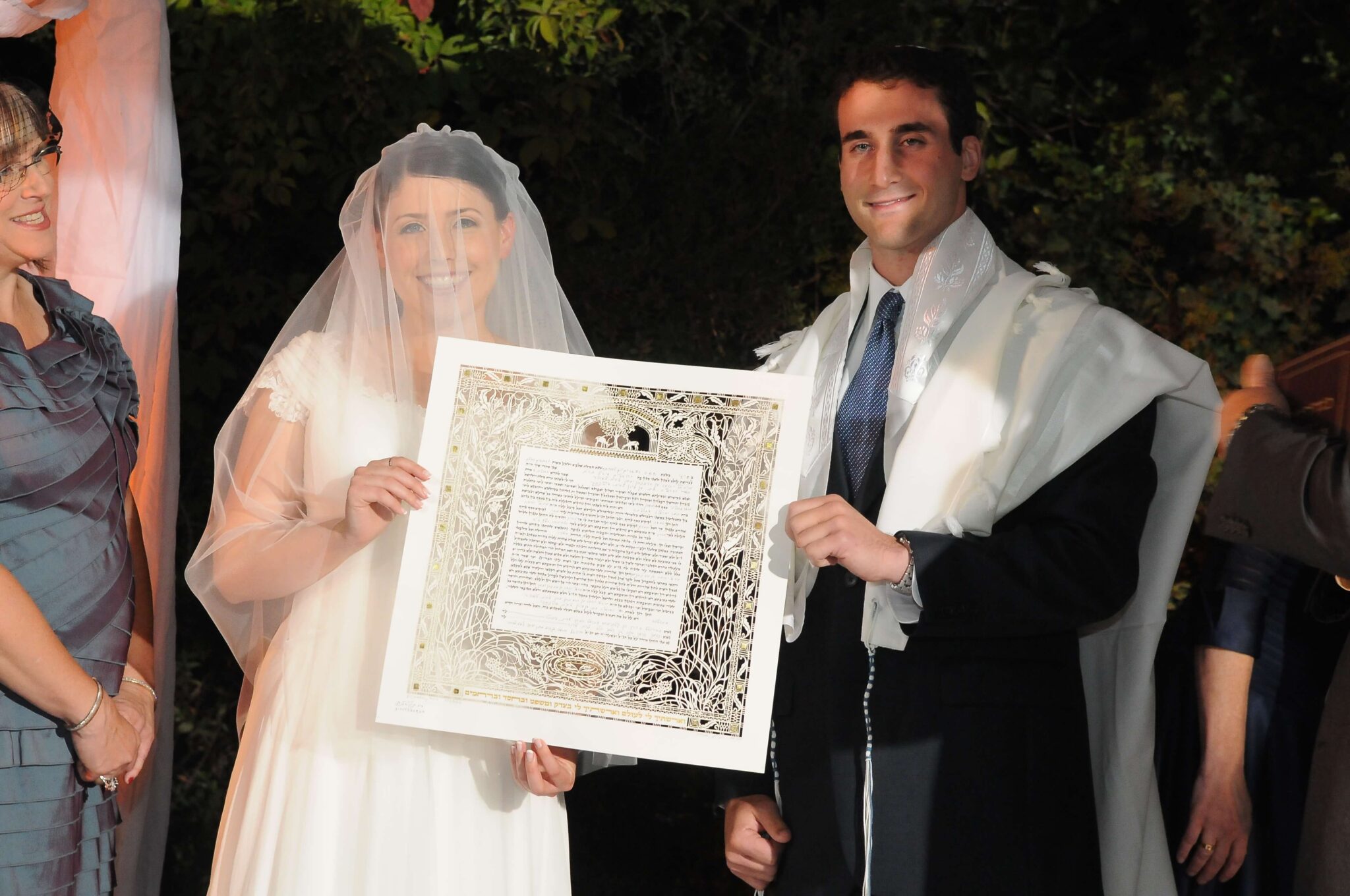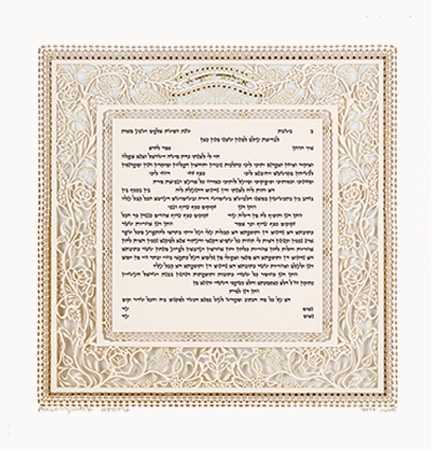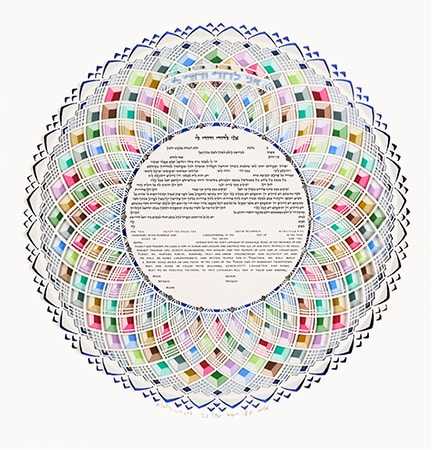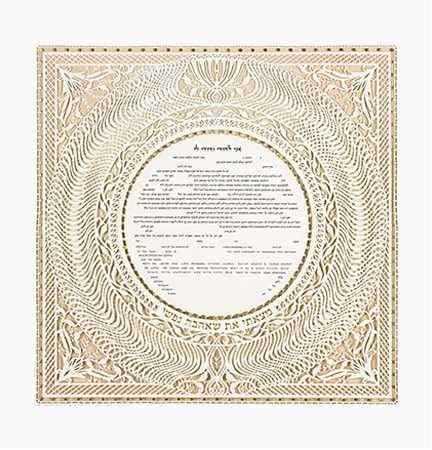The Ketubah Signing Ceremony – How It Works and Why It’s Important

The ketubah signing, an ancient tradition dating from Biblical times is one of the most moving of the traditional ceremonies in Jewish weddings, fulfilling the Jewish legal requirements of the marriage, and as is with modern couples, also laying down the spiritual and emotional commitment between the bride and groom.
When and Where Does the Ketubah Signing Take Place?
This ceremony most often takes place before standing under the chuppah, in a private and intimate setting. The couple, accompanied by their witnesses and family members, gather to formally sign the ketubah—the Jewish marriage contract. The signing is typically led by the officiating rabbi or wedding officiant, who explains the significance of the ketubah and ensures that all legal and religious aspects are properly observed. Witnesses, chosen for their close connection to the couple, also play a crucial role, as their signatures validate the document according to Jewish tradition. The atmosphere during this ceremony is often serene and reflective, offering the couple a moment of quiet and contemplation before they begin the kiddushim ceremony. The timing of the signing is also intentional, serving as a transition from the anticipation and preparations of the wedding day to the sacred commitment they are about to make publicly. Many couples have said that they cherish this part of the wedding day as an opportunity to pause, internalize the gravity of their commitment, and experience a profound sense of connection. In some traditions, blessings are recited, and words of wisdom are shared, further enriching the moment.
Of recent, some modern couples have separated the ketubah signing from the wedding nuptials: making the signing ceremony its own separate wedding event. This provides an opportunity to highlight their contractual obligations and showcase the gorgeous artwork as well.
The ketubah itself, often a beautifully designed artistic ketubah, is a lasting symbol of the promises made on this day–later to be displayed in the couple’s home as a reminder of the love and partnership they have committed to in their married life. A modern ketubah reflects the values of a wedding couple seeking a blend of artistic heritage with contemporary design, making this ritual a bridge from ancient times to the present and future beyond.
The presence of key individuals, such as the officiant, two kosher witnesses, and in many cases, close family members and friends, adds to the intimacy and importance of this ritual. The officiant often takes this time to explain the ketubah’s role in Jewish tradition, detailing its historical roots and contemporary relevance. This explanation ensures that the couple understands the weight of their commitment, as the ketubah is more than a document—it is a binding contract that symbolizes mutual responsibility, love, and dedication. Some families incorporate additional customs into the signing, such as reciting blessings, offering personal reflections, or even sharing emotional words between the couple and their loved ones. The ketubah itself, often an artistically designed beautiful piece, is carefully handled and displayed, ensuring that its significance is honored.
This brief yet profound moment offers the couple a pause before the grand celebration begins, grounding them in the deeper meaning of their union. Many couples find that the signing ceremony sets a powerful emotional tone for the rest of the wedding day, reinforcing the sacred and personal nature of the lifelong partnership they are about to embark upon. A beautiful ketubah becomes not only a legal document but also a cherished work of art that will remain a lasting symbol of their love and commitment.
Who Signs the Ketubah? Understanding Witness Requirements
The signing of the ketubah is a deeply symbolic and legally significant aspect of Jewish wedding ceremonies, and the choice of valid witnesses plays a crucial role in ensuring its validity. According to traditional Jewish law, the ketubah must be signed by two male witnesses who are observant Jews and unrelated to the groom by blood. These witnesses attest to the validity of the marriage contract and the groom’s commitment to fulfilling his obligations as outlined in the ketubah. In Orthodox and many Conservative Jewish weddings, this requirement is still strictly adhered to, with the witnesses often being chosen for their standing within the Jewish community and their knowledge of halacha (Jewish law). The officiant, usually a rabbi or cantor, oversees the process to ensure that all legal and religious requirements are properly followed, guiding the valid witnesses in their role of confirming the correct wording and structure of the ketubah before they have signed on the two witness signature lines .
Since the 20th century, modern, egalitarian Jewish denominations, including many Reform, Reconstructionist, Secular Humanist, and even some Conservative weddings, the customs surrounding ketubah witnesses have changed greatly. Many choose to have female witnesses and non-Jewish witnesses reflecting a more inclusive interpretation of Jewish tradition. Even the signing of the bride and groom is a contemporary approach. couples also opt for close friends or family members, even if they are direct relatives, as a way to make the signing more personal and meaningful. Adding witness signature lines to accommodate additional signees is quite prevalent. These wide range adaptations allow the ketubah ceremony to align more closely with contemporary values of equality and inclusivity while still maintaining the idea that the witnesses validate the ketubah
Regardless of the specific customs followed, the central aspect of the signing of the ketubah serves as a powerful prelude to the wedding ceremony, setting the foundation for the sacred commitment the couple is about to make. The ketubah itself, often a stunning piece of art, reflects the couple’s values and love story. Many choose a personalized ketuba, incorporating meaningful symbols, artistic elements, and text that resonates with their unique relationship, making it not just a legal document but a true keepsake that will adorn their home for years to come.
The Symbolism and Meaning Behind the Ketubah
While the primary function of contemporary ketubot is to outline the mutual commitment of the spouses, the ketubah also serves as a spiritual and emotional cornerstone of the Jewish wedding ceremony. It symbolizes the couple’s dedication to building a life together based on faith, respect, support, and partnership. In Jewish traditional ketubahs, the wording of the ketubah follows the classic Aramaic text, emphasizing the groom’s physical and financial obligations toward his bride. However, in modern ketubah texts, particularly for egalitarian, Reform or interfaith couples, the language has evolved to reflect the couple’s priorities, faith and needs. Many couples choose to personalize their ketubah text, incorporating their own vows, meaningful quotes, or whimsical suggestions that capture the essence of their relationship.
Beyond its written content, the ketubah is often a piece of artwork, meticulously crafted to reflect intricate design, artistic tradition or design options of particular significance to the couple. Traditionally, ketubot were handwritten by scribes, but today, they come in a variety of styles: from hand-painted designs to intricate paper cutting motifs to artistic reproductions. There is an abundance of artistic talent and a wide range of art ketubahs available for the Jewish couple searching for their perfect art ketubah–each, telling a visual story that complements the words within.
Displaying the ketubah in a prominent place serves as a constant reminder of the love and promises exchanged on their wedding day. It becomes a symbol of their journey, reminding them of their shared aspirations and the foundation upon which their marriage was built. Whether following the strict format of a traditional document or a fully customized text, the ketubah carries the weight of history and emotion that makes it one of the most treasured aspects of a Jewish wedding.
Whether you’re looking for the beautiful ketubah design , information about ketubah text options or want to learn more about incorporating meaningful traditions into your wedding with a meaningful art piece , explore our collection of exquisite ketubot and expert Ketubah Artist designs.

